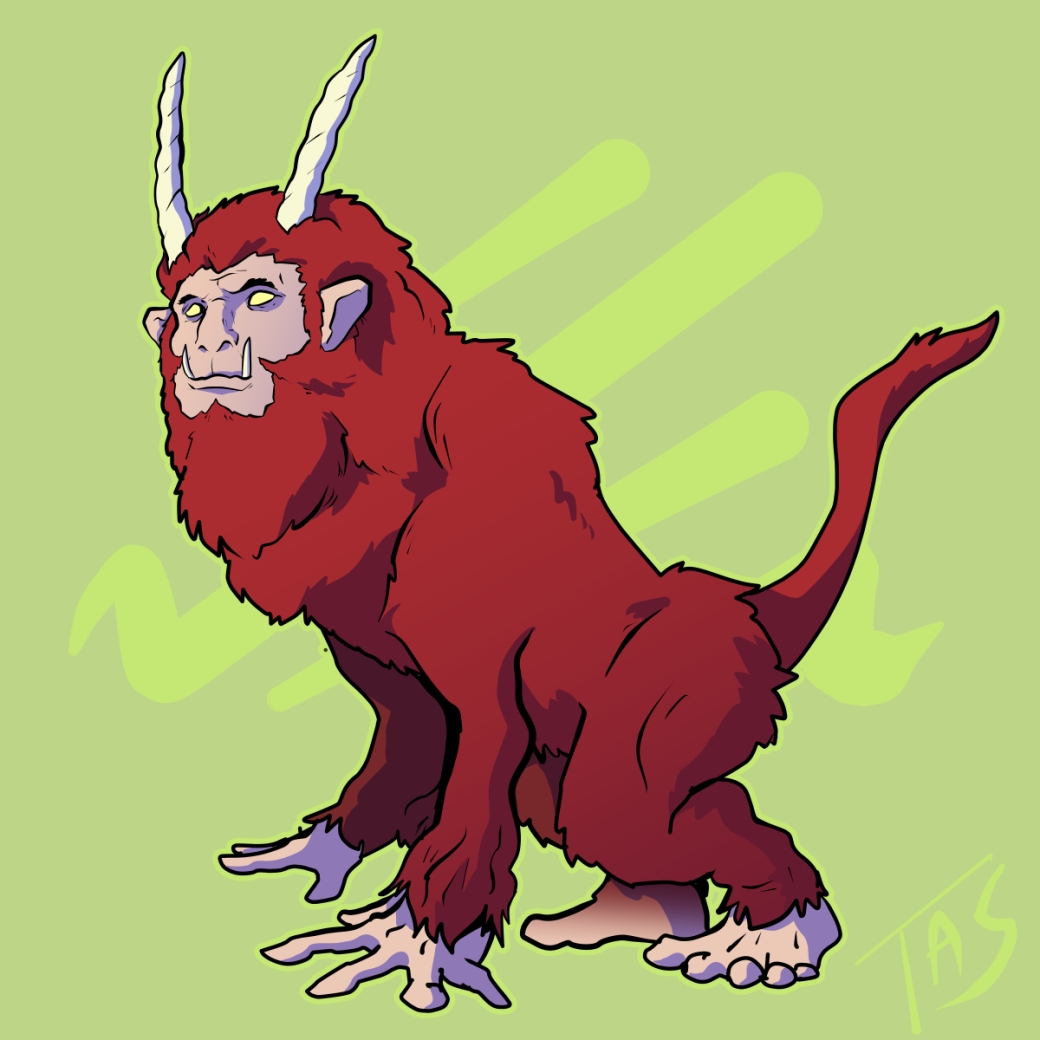
Mantyger
Region of origin: Medieval Europe
A chimeric beast with the body of a tyger, a creature from heraldry similar to but distinct from a tiger, and the hands and face of a man with curling horns and tusks. It is believed the name may be a corruption of the Persian manticore based on a false etymology and use has become somewhat intertwined, but despite some similar features they are often considered separate beasts, and the mantyger may take its origins from second-hand descriptions of baboons.









